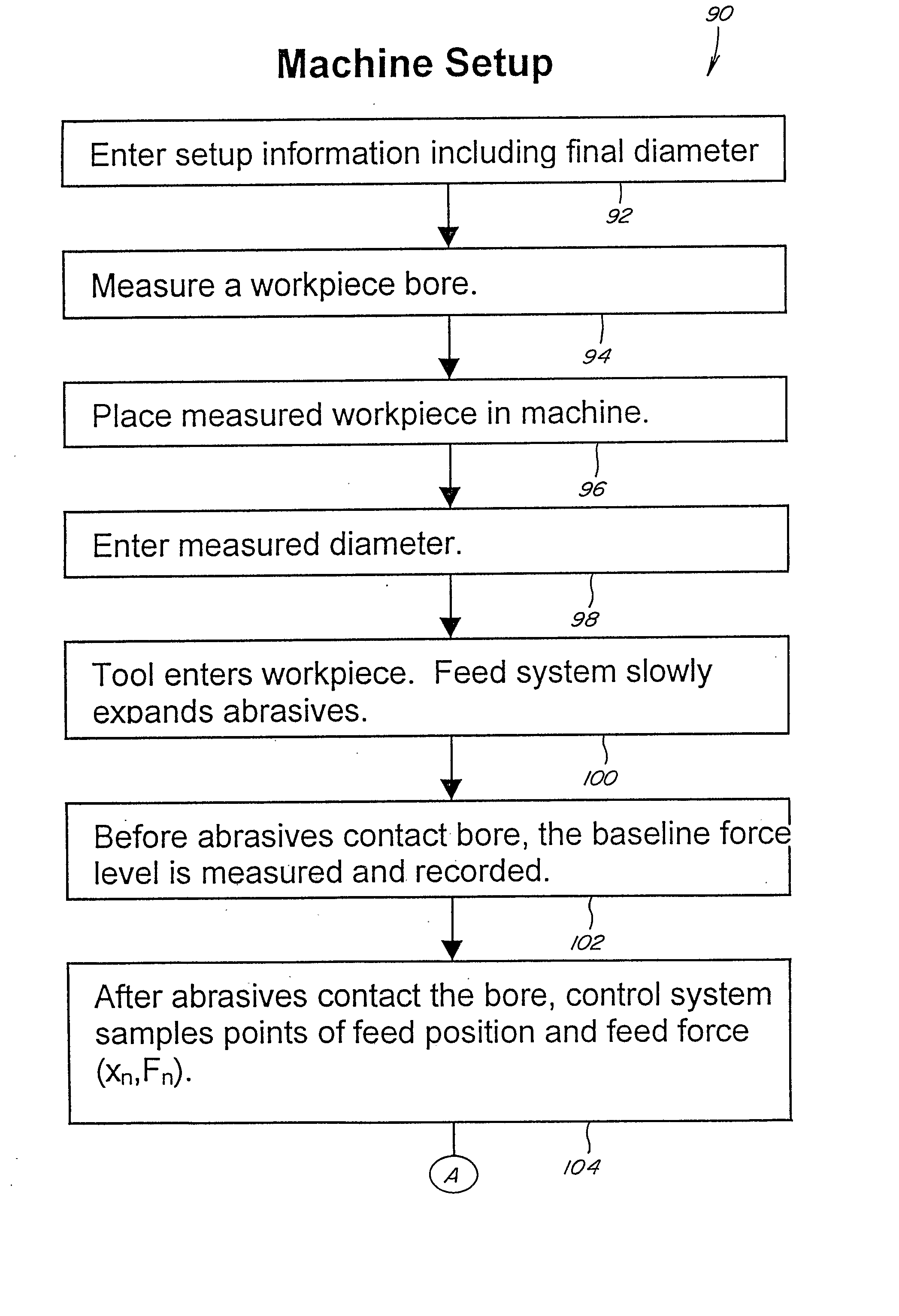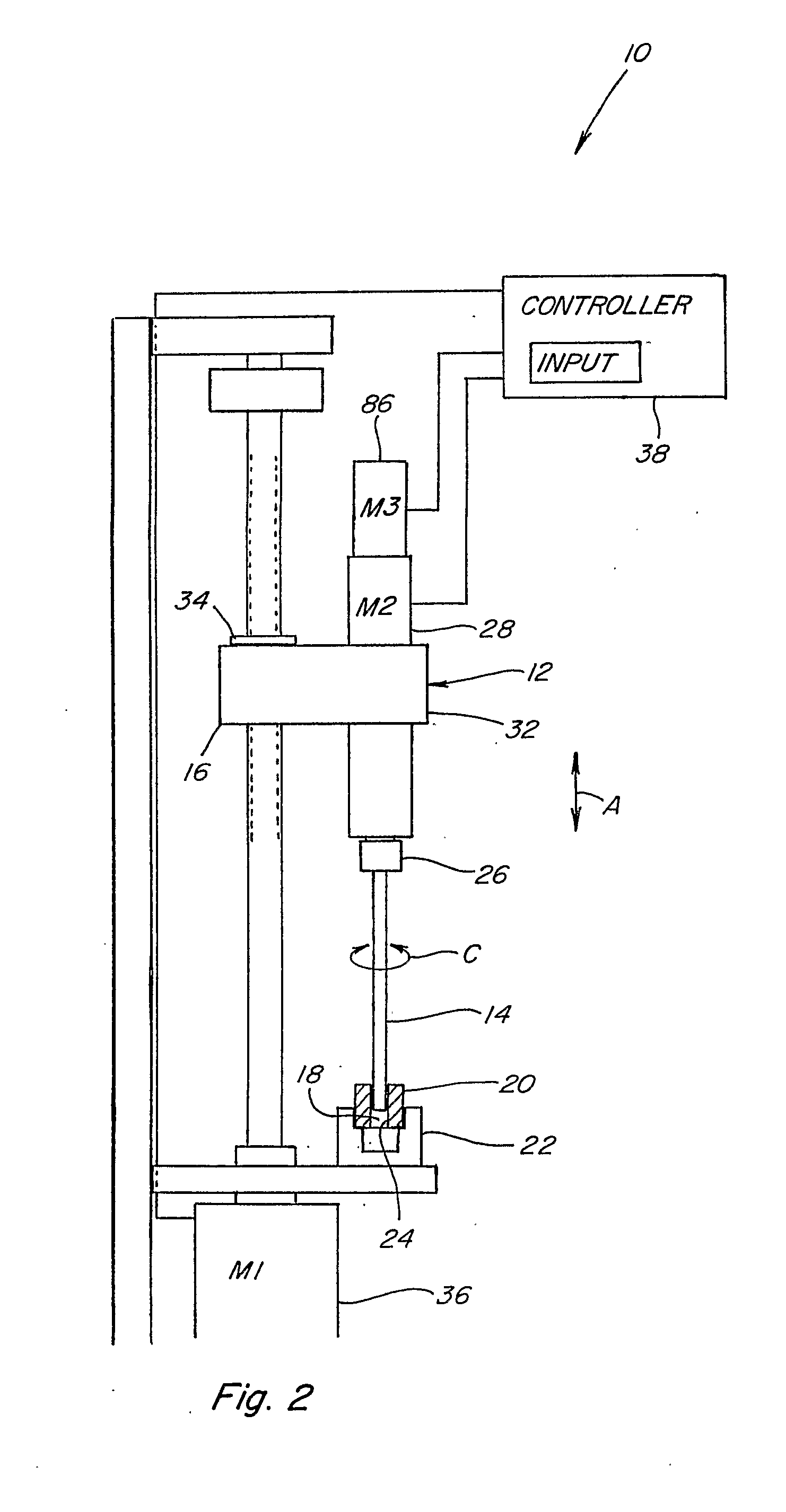Honing Feed System Having Full Control of Feed Force, Rate, and Position and Method of Operation of the Same
a honing machine and feed system technology, applied in the direction of process control, process control, instruments, etc., can solve the problems of inability to control the cycle time, excessive wear of abrasives, tool or fixture damage, etc., and achieve the effect of improving the productivity of many honing applications and wide application
- Summary
- Abstract
- Description
- Claims
- Application Information
AI Technical Summary
Benefits of technology
Problems solved by technology
Method used
Image
Examples
Embodiment Construction
[0036] Referring now to the drawings wherein a preferred embodiment of a feed system and method of operation thereof is shown, in FIG. 1, a representative computer controlled honing machine 10 is shown including aspects of the feed system according to the present invention. Honing machine 10 generally includes a spindle carriage 12 which is movable in a reciprocating stroking action, denoted by arrow A, by a linear motion system such as a conventional motor driven cam linkage mechanism, or a ball screw, roller screw, linear servomotor, rack and pinion, hydraulic cylinder, chain, or belt, under control of a process based main controller 38. Here, carriage 12 is shown supported for reciprocal stroking action in a vertical direction, but it should be understood that stroking in other directions is also contemplated under the present invention. Spindle carriage 12 includes a honing tool 14, which can be of conventional or new construction and operation, generally including an elongate m...
PUM
| Property | Measurement | Unit |
|---|---|---|
| feed force | aaaaa | aaaaa |
| elasticity | aaaaa | aaaaa |
| diameter | aaaaa | aaaaa |
Abstract
Description
Claims
Application Information
 Login to View More
Login to View More - R&D
- Intellectual Property
- Life Sciences
- Materials
- Tech Scout
- Unparalleled Data Quality
- Higher Quality Content
- 60% Fewer Hallucinations
Browse by: Latest US Patents, China's latest patents, Technical Efficacy Thesaurus, Application Domain, Technology Topic, Popular Technical Reports.
© 2025 PatSnap. All rights reserved.Legal|Privacy policy|Modern Slavery Act Transparency Statement|Sitemap|About US| Contact US: help@patsnap.com



